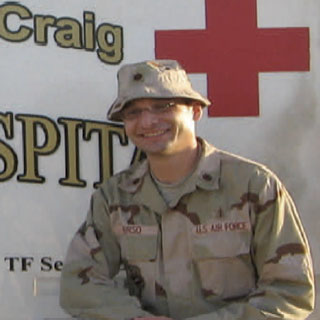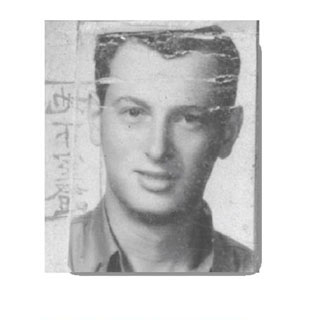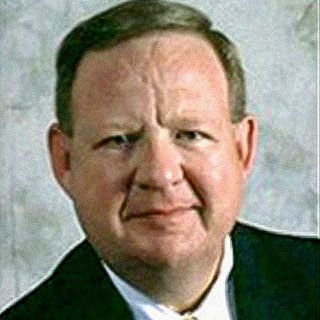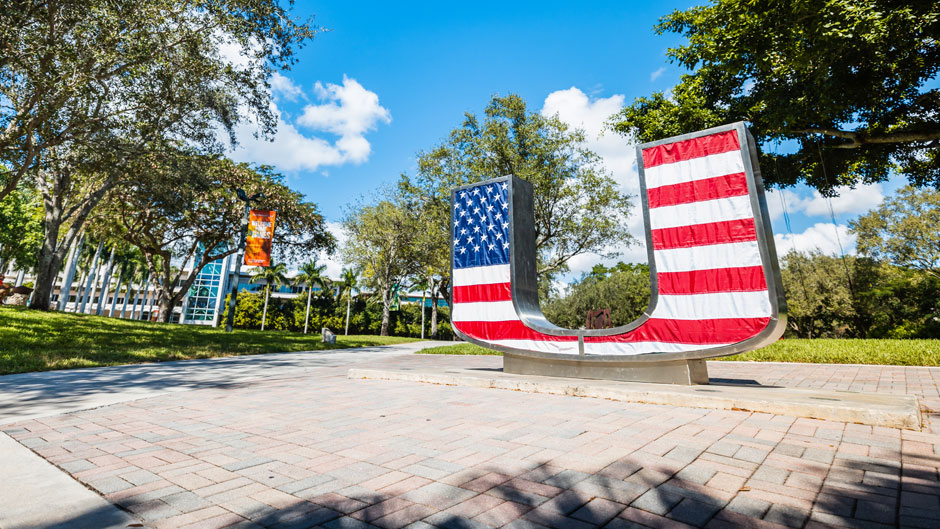On May 30, the last Monday of the month, millions around the country will visit cemeteries to place a flag or flowers on a grave as part of their remembrance for Memorial Day, the federal holiday honoring U.S. military personnel who have died serving in the line of duty. First celebrated as “Decoration Day” in 1868 following the end of the U.S. Civil War, Congress standardized the holiday in 1971 to the last Monday in May and to honor any who died while serving in the armed forces.
Three University of Miami veterans view their military service in much the same way as many service men and women do: as a paradox that the commitment—so rigorous and challenging at the time—provided the most meaningful and satisfying experiences of their lives.
Tony Durso, assistant professor of diagnostic radiology, University of Miami Miller School of Medicine.
Durso served from 2005-2009 in the U.S. Air Force, mostly at Joint Base Andrews Naval Air Facility Washington, D.C.—and most memorably deployed for six months to Bagram Air Base in Afghanistan.
“I’ve never worked in a more singularly focused, team-oriented unit ever. Nothing like that, nothing has come close,” Durso said. 
“There were only about 30 or so docs, nurses, and care givers in our Medical Corps—and working every day was very intense,” Durso said of his experience treating wounded soldiers from the Afghan National Army, United States, and other allies. “There weren’t days off, and many times you got frustrated. But even while you were there you knew it, and as you look back you realize how rewarding it was to be in that environment with that team and with the goal of either helping our allies or getting our soldiers home.”
The medical team all knew each other and even came to know most of the patients, he explained. The corps had deployed together, all arriving on the same plane, at the same time, and then lived and worked together for months.
According to Durso he was lucky to be on the big base, generally protected from the fighting and “not out on the front lines getting shot at.” He was grateful when, after a two-month extension added to his original tour, he returned home to family and loved ones.
There’s little in civilian life that comes close to that military deployment, he noted.
“It’s only going to come around in unfortunate circumstances like a Surfside, the Boston Marathon, or the awful tragedies that we seem to be getting on a daily basis,” he said.
“Everyone in those situations ends up feeling the same thing: Let’s get the job done, how we’re going to do it, and that there are people counting on us,” he added. “And all the silliness that might happen in normal interactions just goes away, and everyone gets singularly focused on performing and, if something’s not going right, then decides how to turn it around.”
Durso highlighted that working in medicine is quintessentially service work.
“And then you combine that with serving in the military and the sense of purpose you get being deployed,’’ he said. “Helping those people who aren’t lucky enough to be in relative safety and who are out fighting—there are not many higher purposes that I could think of.”
Robert Quencer, professor emeritus and former professor and chair of the Department of Radiology, Miller School of Medicine.
Quencer served in the U.S. Navy as a line officer from 1959-1961 with 16 months on a U.S. base in Taiwan (formerly Formosa) during a time of potentially severe conflict between the nationalist Chinese government (Republic of China) and the People’s Republic of China (PRC).
“It was an odd time, the nationalists had been driven out of China and relocated to what is today Taiwan, and our mission was twofold: One, to support the nationalists to eventually retake the mainland—which we all knew wasn’t going to happen—and two, to defend the island, still a disputed area today, from an invasion from mainland China,” explained Quencer, whose administrative duties provided high level support for the Military Assistance Advisory Group and its mission. 
“There was a time every day nearly at the same time in the afternoons when the PRC military would bomb the Kinmen Islands [a stronghold of the nationalist Chinese] next to us,” he remembered.
“My being stationed there gave me insights into what life was like in a Third World country, it was so rudimentary and primitive,” Quencer observed. “It was an amazing experience that I never would have had otherwise.”
While the experience had no direct bearing on his academic choices, years later it did prompt a return to the region. When other radiologists realized he had spent time in the military there, he was invited back on three occasions to give lectures at Taiwanese medical schools where he formed new friendships based on his service experience.
He left the military after his tour of duty to attend medical school and went on to become a decorated medical specialist. Quencer recently stepped down after 28 years as chair of the Department of Radiology.
“I never wanted to make the military my career, but I have great admiration for the people who do that, for the military, and for all those that have served,” he said.
Robert Fifer, director of audiology and speech-language pathology at the Mailman Center for Child Development, has been with the University for 32 years.
In his pursuit of becoming an audiologist and joining the military, Fifer enrolled in the Reserve Officers’ Training Corps and, after an educational deferment that allowed him to complete his master’s degree, he served in the U.S. Air Force from 1976-1986. His first assignment was to Clark Air Base in the Philippines, just three months after the end of the Vietnam War.
“My time was satisfying in terms of respect for one another, with regard to camaraderie, and also for structure and mission,” he said. “The mission itself can be defined either as a large mission that covers an umbrella-type purpose or a smaller day-to-day mission that things need to be accomplished on a smaller scale,” he added.
“Whichever you look at, there is teamwork and respect for one another,” he continued. “And there is obviously a leader who has a plan, and then everyone works together to execute it in order to achieve the specific goals of the day or the major project.”
At the air base, he treated many soldiers who shared hair-raising, unspeakable stories, both from the horrors of their captivity with the Vietcong and the terrors of the jungle.
“The impact on those who had been POWs was tremendous,” he recalled. “They were still in the hospital and going through a period of reacclimation and psychological readjustment—they no longer had to worry about pain or torture or betraying their country—and were not accustomed to the absence of tension and pressure either mentally or physically.’’
In the Philippines, he befriended Bill, a C130 pilot who invited him to fly missions into the jungle and where he experienced firsthand the hazardous conditions. He and Bill bonded through those many missions and became lifelong friends—their families spending holiday vacations together for years in the Orlando area. Bob became “Uncle Bob” for Bill’s children, and Bill became “Uncle Bill” for Bob’s son.
His military deployment to Southeast Asia provided the experience of a lifetime and allowed him to see “how the other half of the world lives,” he said.
“My experience was lifechanging. I began to recognize the differences between how I grew up and how the guy next to me in class or sitting on an airplane as an auxiliary crewman grew up,” he noted.
He saw poverty—three-walled shacks along the highway with dirt floors and caribou-pulled plows to till the fields—unlike any he had ever seen in the United States.
“I was a brand-new second lieutenant, going month to month with a paycheck, and poor by our standards, but considered extremely rich by theirs,” he said.
His time in the service, in terms of fellowship and camaraderie and the sense of uniformity for purpose and mission, was overwhelming satisfying, Fifer asserted.
“Here, with the people I work with in the medical school for my service area, I have worked hard to create a family-like atmosphere where we support and look out for one another,” he pointed out. “But that has taken a lot more work and effort than it did in the military when you would go from one assignment to another.”
For a new assignment in the service, someone might feel like the odd one out for about three hours, Fifer explained. “Then all of a sudden you were part of the family, and everyone looked out for each other,” he added. “In the civilian world . . . you have to work hard to cultivate that and maintain it. The construction of that type of close relationship is very different from what I experienced in the military.”
For those interested in connecting with other U.S. military veterans at the University, join the Veterans Unite Employee Resource Group listserv. Learn more at https://www.hr.miami.edu/working-at-the-u/diversity-and-inclusion/employee-resource-groups/veterans-unite/index.html.

